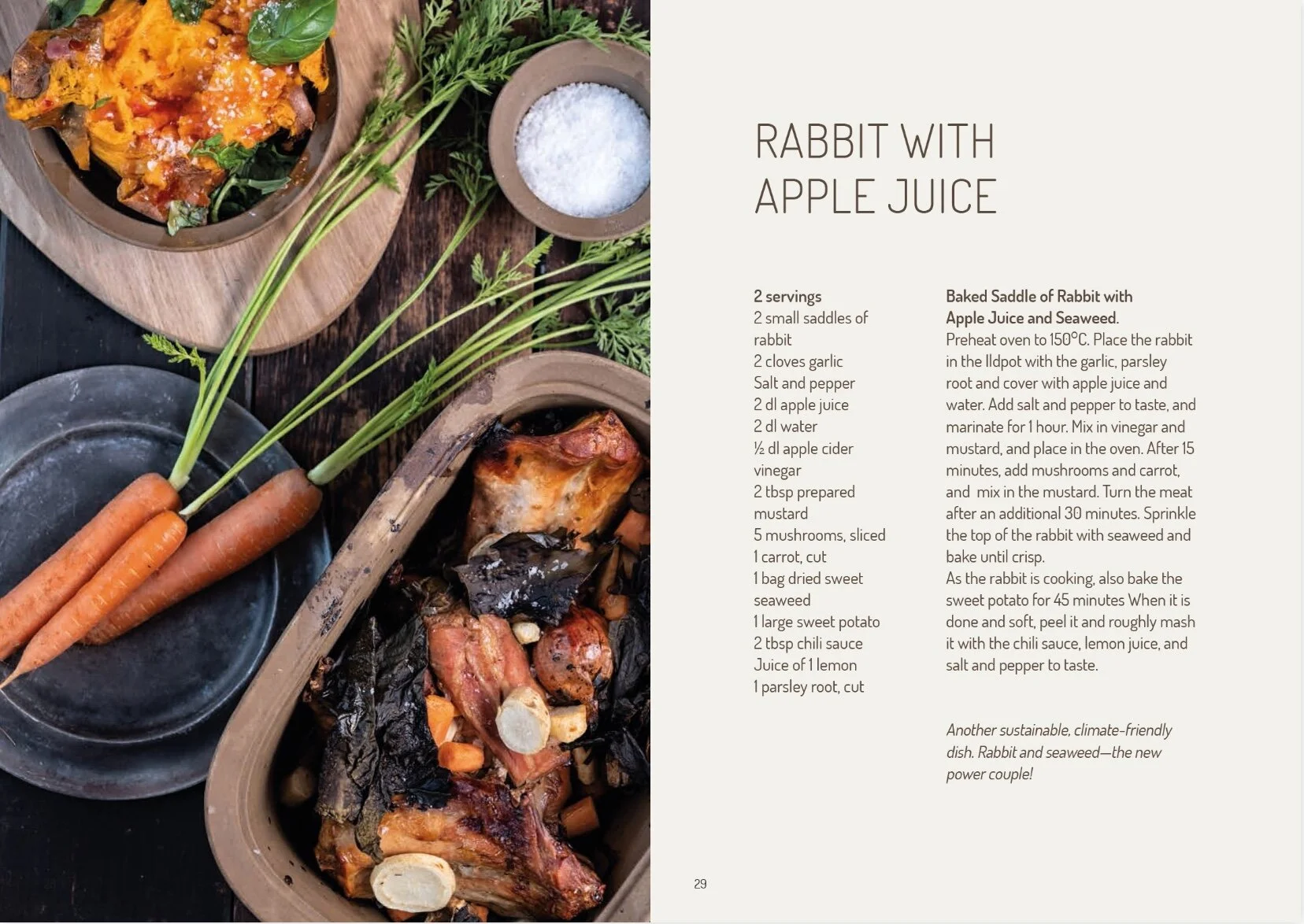Ildpot by Grethe Meyer from FDB Møbler
/FDB Møbler have just relaunched the Ildpot range of ceramics that were first produced and sold by the company in 1976.
The designer Grethe Meyer (1918-2008) had trained at the Royal Danish Academy of Fine Arts and graduated in 1947 - the only woman to graduate that year. She became a leading furniture and industrial designer who, from 1960, ran her own design studio.
The Ildpot or Firepot range is not made using ordinary clay but this is "cordierite ceramic, a magnesium aluminium".
That is in quotation marks because I am not a potter so I just had to copy the description from the FDB web site but I know enough to know that the "silicate" part indicates a clay body that is fired at a high temperature and is like a stoneware or even a heavyweight porcelain. The surface, although matt, is vitrified so, like glass, it will not absorb food, does not need a glaze and second firing and is tough enough for bowls and dishes and pans to be taken straight from the freezer and put in the oven and can then be taken straight from the hot oven to the table for the food to be served.
In the 1930s, Danish furniture designers were still producing large and expensive cabinets for storing a full dinner service and, in many houses, both the cabinet and its fine china would have been in the dining room. China, glassware and cutlery would have been taken from the cabinet to set the table and then returned to the cabinet after the meal and after it had been washed in the scullery or in the kitchen. In the kitchen, in any respectable house, food would have been transferred from pans and roasting tins to serving dishes for the table.
From the 1950s onwards, more and more women with families were working and, for this new age and for a very different lifestyle, the Ildpot range was designed for food that could either be prepared ahead and chilled or frozen or meals could be produced quickly after a day at work and then, after cooking, could be taken straight to the table. It was the age of casseroles and pan roasted meat and vegetables.
The Ildpot bowls and dishes have bold rims and straight sides so are simple shapes that are easy to pick up when they hot and easier to wash and the collection was designed to stack, to take up as little space as possible, and, almost certainly, that suggests it would have been kept in a cupboard in the kitchen rather than in the dining room.
Of course, this was also the period when new kitchens, even in small apartments, were designed to take a small table with compact chairs so it was a period when even middle-class families would eat in the kitchen and only used their dining room, if there was one, for weekends or for more important family meals.
It is fascinating that this oven-to-table ware is evidence for some major change in eating habits - the move from formal and traditional dishes to meals for busy families that were easy to prepare and easy to serve.
Over the forty years or more since the Ildpot range was designed, meals - the food eaten and the dishes cooked - have changed - partly with fashion; partly with more people travelling and returning home with some adventurous new ideas to try at home; partly with new ingredients with some foods available through a longer season or even year-round and with more and more people buying ready-prepared meals that are simply reheated in the oven or the microwave.
But maybe FDB have realised that there may be more changes on the way. If lockdown returns this winter; we may well have more time at home and it’s possible we will turn back to more substantial and more traditional food for comfort.
When the Ildpot ceramics came out, Søren Gericke, then a young chef, created some suitable recipes and, with this relaunch, he has produced 16 new dishes that are published on the FDB site.
His recipe for rabbit made me think about how much what we eat has changed.
When I was very small, my grandparents still had chickens in their garden, in a hen house that my grandfather built at the beginning of the war so that they had their own eggs once rationing started. One of my very earliest memories, as a toddler, was going down their garden path to reach into the nesting box to collect eggs for my breakfast.
But then, thinking back, I remember that even well after the war ended, the chickens were too valuable to eat … so we had roast beef or roast lamb or roast pork at the weekend, huge joints of meat you would think twice about buying now because they are expensive, but we had chicken for important meals at Christmas or Easter and then it was treat. How things have changed.
Also, when I was small, we had rabbit most weeks, as a mid-week supper, because it was so cheap. I had forgotten that but now can't actually remember the last time I had rabbit stew.








































